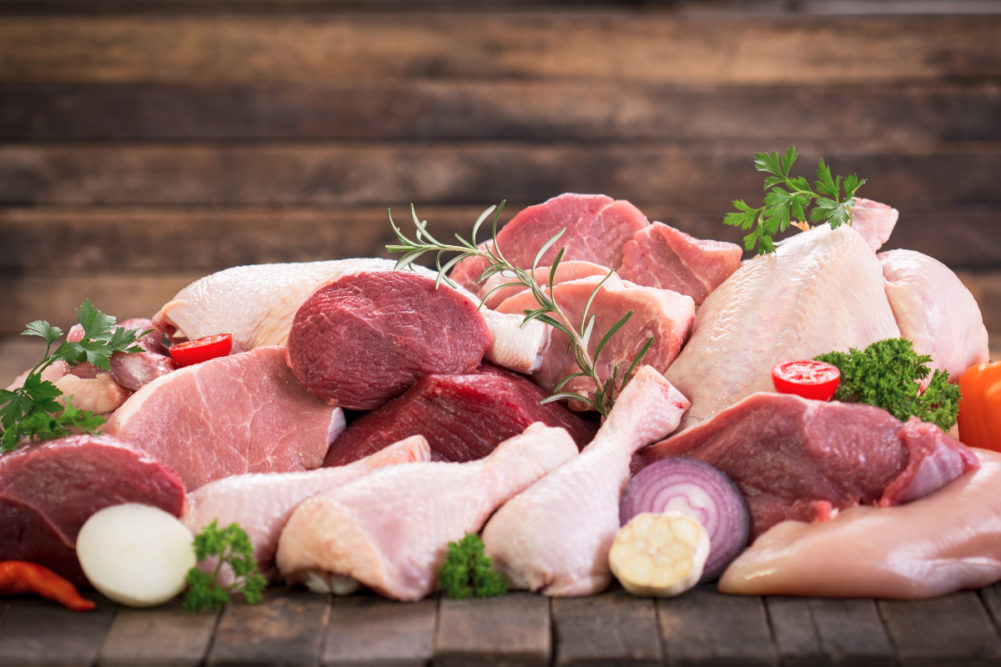 KANSAS CITY — Using metrics tracked closely by the grain-based foods industry, the meat sector has much going in its favor. Over the past five years, while per capita consumption of flour has declined to a 30-year low, per capita disappearance of meat rose to 224 lbs, up 22 lbs, or 11%.
KANSAS CITY — Using metrics tracked closely by the grain-based foods industry, the meat sector has much going in its favor. Over the past five years, while per capita consumption of flour has declined to a 30-year low, per capita disappearance of meat rose to 224 lbs, up 22 lbs, or 11%.
The strong meat demand has mirrored the sector’s share price performance. From the end of 2014 through 2019, companies specializing in meat production (including Tyson Foods, Pilgrim’s Pride, Hormel Foods and Sanderson Farms) dramatically outperformed processed foods sectors, according to data published in Food Business News. The 60% jump in the index of meat companies bested grain-based foods, up 33%; diversified food companies, up 8%; food ingredient companies, up 8%; and confectionery, up 36%.
Factors fueling this success include a steadily increasing infatuation with protein among many consumers focused on health and wellness perhaps coupled with diminished concerns about the negative health consequences of saturated fat intake.
The pasture on the other side of this fence is not entirely green. Despite this good fortune, the meat sector has been and remains plagued by deep-seated challenges, and those difficulties have become ever more apparent as 2020 has progressed. Data from the Midwest Center for Investigative Reporting tie more than 25,000 COVID-19 illnesses to meat packing plants. At least 93 workers in 39 plants in 24 states have died from the illness. Several US Department of Agriculture meat inspectors have died. The outbreak cast a harsh light on labor conditions in the meat packing business.
With a cascade of bad news, share prices of meat companies have surrendered a portion of the five-year gains, slumping 18% this year through mid-June, versus changes ranging from up 1% to down 10% among the processed foods sectors (grain-based shares were down 4%).
In dealing with the pandemic, executives from the meat industry grappled with difficult choices over whether to keep plants operating at normal capacity and place workers at risk of illness and death or to slow line speeds or even close. While recognizing that such a decision is about as difficult and nightmarish as any a food industry chief executive officer could face, the message communicated by meat sector leaders rankled many outside (and some within) the protein sector.
In particular, executives from meat companies justified decisions to keep plants open by inaccurately conflating challenges confronting the meat supply with the entire food supply. “The food supply chain is breaking,” one executive declared. A second company said in a statement, “We have continued to run our facilities for one reason: to sustain our nation’s food supply during the COVID-19 pandemic.”
Yes, a meaningful percentage of the meat supply has been imperiled in recent months. The food supply? Not for a moment. Extraordinary, even heroic efforts by bakers and other food suppliers were highly effective at restocking supermarket shelves in the face of surging demand. As food companies, retailers and government officials tried to discourage hoarding, calls for calm were undercut by overreaching statements from meat executives about the food supply chain. There are many good reasons to consider keeping meat packing plants open amid the pandemic, but inaccurately raising the specter of widespread hunger is not one of them.
When the COVID-19 catastrophe lifts, the meat sector’s challenges will not magically be gone. Greenhouse gas emissions and challenges around achieving environmental sustainability are issues of concern. While the flow of investment dollars into venture capital investing has slowed since the start of the pandemic, makers of plant-based and cell-based alternatives have attracted record levels of capital infusions in recent months. Strong demand for protein is fueling this investment, but so is the sense the meat sector is vulnerable. For grain-based foods, the meat industry’s experiences over the past several months offer lessons meriting close attention.





